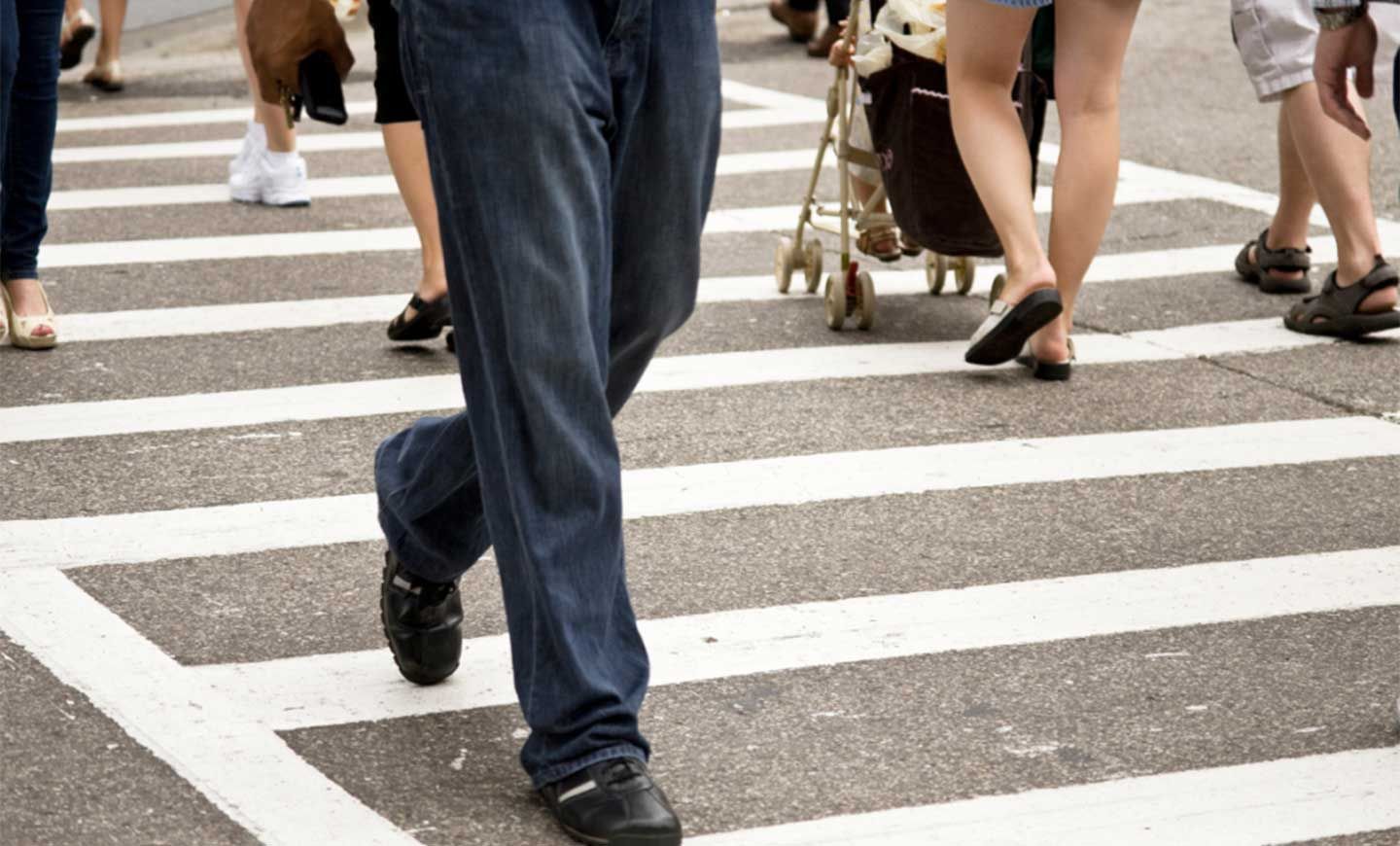Arizona has many cities, towns, and communities, from bustling metropolises like Phoenix and Tucson to college towns and tourist destinations. These population centers are the locations of heavy traffic congestion, presenting unique challenges for pedestrian safety.
From 2012 to 2019, there were 1,202 reported incidents where motor vehicles killed pedestrians. Of particular concern is how most of those deaths occurred in 2018. With the need for greater awareness and adherence to safety laws, understanding crosswalks and pedestrian right of way are crucial factors in protecting communities.
Arizona’s Crosswalk Laws: What Is a Crosswalk?
So, what is a crosswalk? The definition can be found in the Arizona Revised Statutes (ARS), a set of laws that regulate traffic and transportation. ARS Section 28-601 defines “crosswalk” to mean:
“That part of a roadway at an intersection included within the prolongations or connections of the lateral lines of the sidewalks on opposite sides of the highway measured from the curbs or, in the absence of curbs, from the edges of the traversable roadway.
Any portion of a roadway at an intersection or elsewhere that is distinctly indicated for pedestrian crossing by lines or other markings on the surface.”
Arizona maintains stringent crosswalk laws designed to protect pedestrians. Arizona Revised Statutes (“ARS”) Section 28-792 outlines the right-of-way rules for pedestrians at crosswalks in Arizona. It mandates that drivers yield to pedestrians in crosswalks, slowing down or stopping if necessary to ensure pedestrian safety.
When Do Pedestrians Not Have the Right of Way?
There are circumstances where pedestrians do not have the right of way when crossing the street. ARS Section 28-793 governs crossings unmarked crosswalks at an intersection, stating:
“A pedestrian crossing a roadway at any point other than within a marked crosswalk or within an unmarked crosswalk at an intersection shall yield the right of way to all vehicles on the roadway…
A pedestrian crossing a roadway at a point where a pedestrian tunnel or overhead pedestrian crossing has been provided shall yield the right of way to all vehicles on the roadway…
Between adjacent intersections at which traffic control signals are in operation, pedestrians shall not cross at any place except in a marked crosswalk.”
Legal Consequences of Violating Crosswalk Laws
The potential liability for drivers who fail to yield to pedestrians present in crosswalks is a pivotal aspect of crosswalk accident cases. Understanding the consequences of such drivers is essential:
Civil liability: Drivers who violate Arizona’s right-of-way laws at crosswalks may face civil liability if their actions harm pedestrians. This can include financial responsibility for the injured party’s medical bills, rehabilitation costs, and other damages.
Insurance implications: Auto insurance policies typically cover damages resulting from accidents caused by the policyholder’s negligence. When a driver fails to yield and causes a crosswalk accident, their insurance company may be obligated to provide coverage up to the policy limits. However, if the driver’s policy limits are insufficient to cover the damages, the driver may be personally liable for the remaining amount.
In essence, drivers who fail to yield in crosswalks may face not only legal consequences but also financial responsibility for the injuries and damages they cause. The legal implications underscore the importance of vigilance and adherence to traffic laws in ensuring the safety of pedestrians within crosswalks.
Your Safety Is Paramount
In Arizona, roadway users must prioritize pedestrian safety for the collective good. Keep these points in mind:
Driver vigilance: As a driver, maintain constant awareness of pedestrians, particularly in proximity to crosswalks.
As a pedestrian: Use crosswalks responsibly, adhere to signals at intersections, and avoid crossing in front of oncoming traffic.
Arizona’s commitment to pedestrian safety necessitates shared responsibility. By grasping crosswalk laws and respecting the right of way of others, we contribute to safer streets.
Steps To Take After a Pedestrian Accident
If you’re a pedestrian who has been injured due to a negligent driver’s actions, it’s essential to take the right steps to protect your well-being and legal rights:
Seek medical attention: Your health is the top priority. Even if your injuries seem minor, consult a medical professional for a thorough evaluation. Some injuries may not manifest immediately, and prompt medical care is crucial.
Document the scene: If possible, gather evidence at the accident scene. Take photos of the crosswalk, any visible injuries, the driver’s license plate, and the vehicle involved. Obtain contact information from any witnesses.
Report the accident: Contact law enforcement to report the accident. A police report can be valuable when documenting the incident for insurance and legal purposes.
Consult an attorney: Consider consulting a personal injury attorney experienced in pedestrian accidents. They can provide guidance on pursuing a legal claim for compensation.
Notify your insurance company: If you have auto insurance, inform your insurance company of the accident. Your policy may provide coverage, even as a pedestrian.
Pedestrian Injury Lawyers You Can Count On
Should you suffer injuries in a pedestrian accident, do not hesitate to contact The Husband & Wife Law Team – your trusted allies for justice and safety.
We are not merely dedicated to the law; we are fervent advocates for your well-being. Our pedestrian injury attorneys are ready to assist you in seeking justice and full compensation for all damages.
Contact us today for a complimentary consultation.


